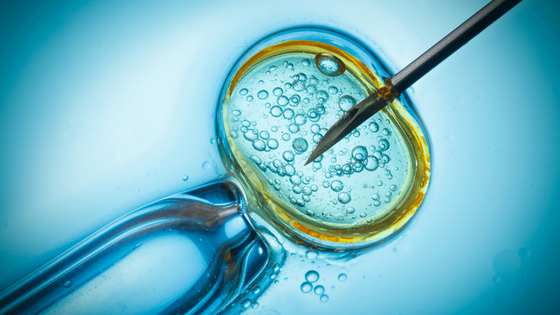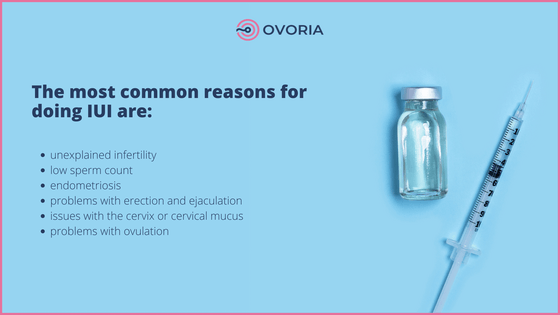What You Need to Know About Artificial Insemination?
The most common causes of infertility in women can include polycystic ovary syndrome (PCOS), endometriosis, uterine fibroids, infections, problems with the reproductive system, primary ovary insufficiency, problems with the menstrual cycle or ovulation. Male infertility can be caused by medical conditions that affect sperm formation (diabetes, chromosome defects, thyroid problems, injury to the testicle, varicocele) and conditions that affect sperm transportation.
According to the statistics, infertility affects a significant proportion of the population. Infertility means that couples can not conceive after one year of unprotected course, but thanks to the development in reproductive technologies, now teams have more opportunities for becoming parents.

What is Artificial Insemination?
Artificial insemination is a fertility treatment technique used to deliver sperm directly to the cervix or uterus. Sometimes, these sperm are washed or "prepared" to increase the likelihood of getting pregnant.
There are at least two methods to undergo artificial insemination: intrauterine insemination (IUI) and intracervical insemination (ICI).
What is Intauterine Insemination (IUI)?
Intrauterine insemination (IUI) is a fertility treatment that allows the direct transfer of sperm into the uterus. In natural conception, sperm is deposited in the vagina and swims up to your fallopian tubes. However, in IUI, sperm is washed and transferred directly into your uterus, which increases the likelihood of pregnancy by placing them closer to the eggs. IUI procedure can be performed with your normal cycle or with certain fertility medications, depending on the medical history and cause of infertility.
Why IUI is Done?
A couple's ability to become pregnant depends on many different factors. Some of the health concerns used to justify the IUI treatment are as follows:
- Unexplained infertility
- Low sperm count
- Endometriosis
- Problems with erection and ejaculation
- Issues with the cervix or cervical mucus
- Problems with ovulation

The Possible Risks Associated with IUI
Intrauterine insemination is one of the simplest and safest fertility procedures. Moreover, risks associated with IUI are low because IUI is relatively simple. Some of the complications that may occur while going through IUI include:
Spotting: In some cases, placing a catheter in the uterus may cause a small amount of vaginal bleeding. Usually, it doesn't affect the chances of pregnancy.
Infection: There's a slight chance of developing a disease as a result of the procedure.
Multiple pregnancies: IUI itself isn't associated with an increased risk of multiple pregnancies — twins, triplets or more. But, when coordinated with ovulation-inducing medications, the risk of multiple pregnancies is higher.
Contact fertility specialist if you are taking fertility medications during IUI treatment and you are experiencing the following symptoms:
- nausea and vomiting
- lightheadedness
- shortness of breath
- fast weight gaining
- pelvic pain
What is ICSI Treatment?
Intracytoplasmic sperm injection is a part of a procedure called in-vitro fertilization. In-vitro fertilization involves fertilizing the egg with sperm after injecting sperm into an egg that has matured. It is a procedure needed for couples to help them have a baby.
How Does ICSI Work?
Intacytaoplasmic sperm injection include 6 steps:
Step 1: Fertility Consultation
The consultation includes a discussion with the fertility specialist, followed by a thorough medical examination. An embryologist will explain the options available to address issues related to sperm.
Step 2: Stimulation
During this stage, a woman needs to visit on day two or three of her menstrual cycle, when hormonal investigations are done along with an ultrasound. The ovaries are stimulated with medication to promote the growth of follicles containing the eggs; this process can last for eight to 12 days. The response of the ovaries will be screened through ultrasounds and blood investigations at regular intervals.
Step 3:Egg Collection
An injection is given to help with its final maturation after eight to 12 days, and it is then removed. The patient will visit the clinic for the egg retrieval process, performed 34-36 hours after administering the trigger.
Step 4:Sperm Collection
An embryologist processes a sperm sample that the male partner provided. If the male partner has no sperm in his epididymis or testicles, the embryologist can extract sperm from those organs.
Step 5:Embryo Transfer
After the embryos are developed, they will be injected into the uterus to implant and impregnate the woman. A thin, flexible needle is used to inject them into the uterus.
Step 6:After Transfer
After the embryo transfer, a woman is given medicine to help the embryo implant in the uterus. After a few weeks, pregnancy is confirmed by taking pregnancy tests.
When is ICSI Recommended?
The doctor can recommend the procedure of ICSI couples in the following cases:
- In cases of sperms with poor morphology or motility;
- In cases of low sperm count;
- In cases of men who underwent vasectomy, or those with blocked epididymis;
- When having an embryo testing for a genetic condition, and the sperm sticks to the outside of the eggs;
- Where the couple had already undergone IVF Treatment, with very few or no eggs fertilized.

